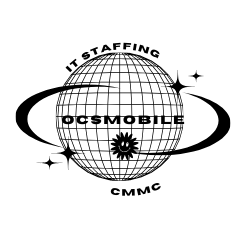Economic downturns can present unique challenges for businesses in the dynamic realm of technology, particularly in maintaining a robust tech talent pipeline. As organizations strive to navigate through uncertain times, it becomes imperative to recession-proof their talent acquisition strategies. Here, IT organizations can seek help from IT staffing company to navigate the volatile IT talent market.
This blog explores strategies for ensuring the resilience of your tech talent pipeline, focusing on leveraging IT staffing services’ expertise.
1. Investing in Continuous Learning and Development: In the face of economic uncertainties, organizations must prioritize developing and upskilling their existing workforce. Investing in continuous learning programs not only boosts employee morale but also ensures that your team is equipped with the latest skills and technologies. Collaborating with IT staffing services can provide access to candidates who demonstrate a commitment to ongoing learning and professional growth.
2. Strategic Workforce Planning: Proactive workforce planning is essential for recession-proofing your tech talent pipeline. IT leaders should align their hiring strategies with the organization’s long-term goals, identifying critical roles and skill sets that will be integral to the company’s success. Engaging with IT staffing services ensures a strategic approach to workforce planning, helping organizations anticipate and address talent needs.
3. Embracing Flexible Staffing Models: Flexible staffing models, including temporary and project-based roles, offer organizations the agility to scale their workforce according to changing demands. Leveraging IT staffing services enables access to a pool of skilled professionals who are open to temporary or contract positions. This flexibility allows organizations to adapt swiftly to market fluctuations without compromising productivity.
4. Building Talent Communities: Establishing and nurturing talent communities is a proactive approach to recession-proofing your tech talent pipeline. Engage with IT consulting Virginia Beach companies to create networks of potential candidates, even before specific positions become available. By fostering relationships with talented professionals, organizations can reduce the time-to-hire during critical periods.
5. Prioritizing Employee Well-being: A workforce that feels supported and valued is more likely to weather economic uncertainties with resilience. Prioritize employee well-being by offering support services, promoting work-life balance, and fostering a positive organizational culture. IT staffing services can assist in identifying candidates who prioritize a healthy work environment.
6. Diversifying Talent Sources: Overreliance on a single talent source can pose a risk to your tech talent pipeline during economic downturns. Diversify your talent sources by collaborating with IT staffing services that have access to a broad network of candidates. A diverse talent pool mitigates risks and brings a range of perspectives and experiences to your organization.
7. Leveraging Technology for Recruitment: The use of technology in recruitment processes can enhance efficiency and widen the reach of your talent acquisition efforts. Collaborate with IT staffing services that leverage AI-driven tools for candidate matching, predictive analytics, and efficient screening processes. This ensures that your organization can quickly and accurately identify and secure top tech talent.
Recession-proofing your tech talent pipeline requires a holistic and strategic approach. By investing in continuous learning, embracing flexible staffing models, building talent communities, and prioritizing employee well-being, organizations can fortify their workforce against economic uncertainties. Collaborating with IT staffing services adds an extra layer of expertise, ensuring that your talent acquisition strategies are agile, targeted, and effective even in challenging times. As businesses continue to navigate the ever-changing landscape, a resilient tech talent pipeline becomes a strategic asset for sustained success.



